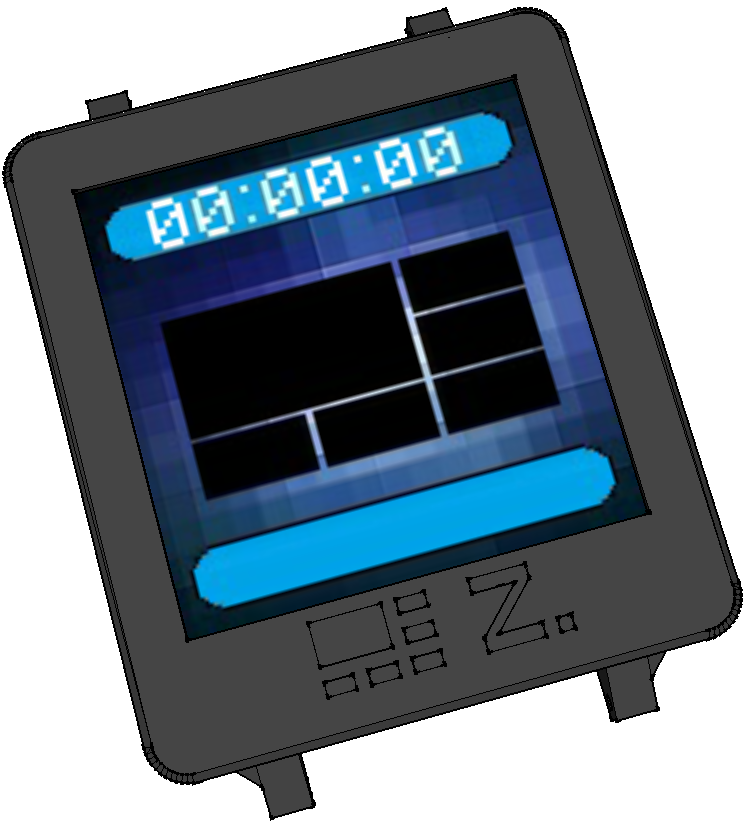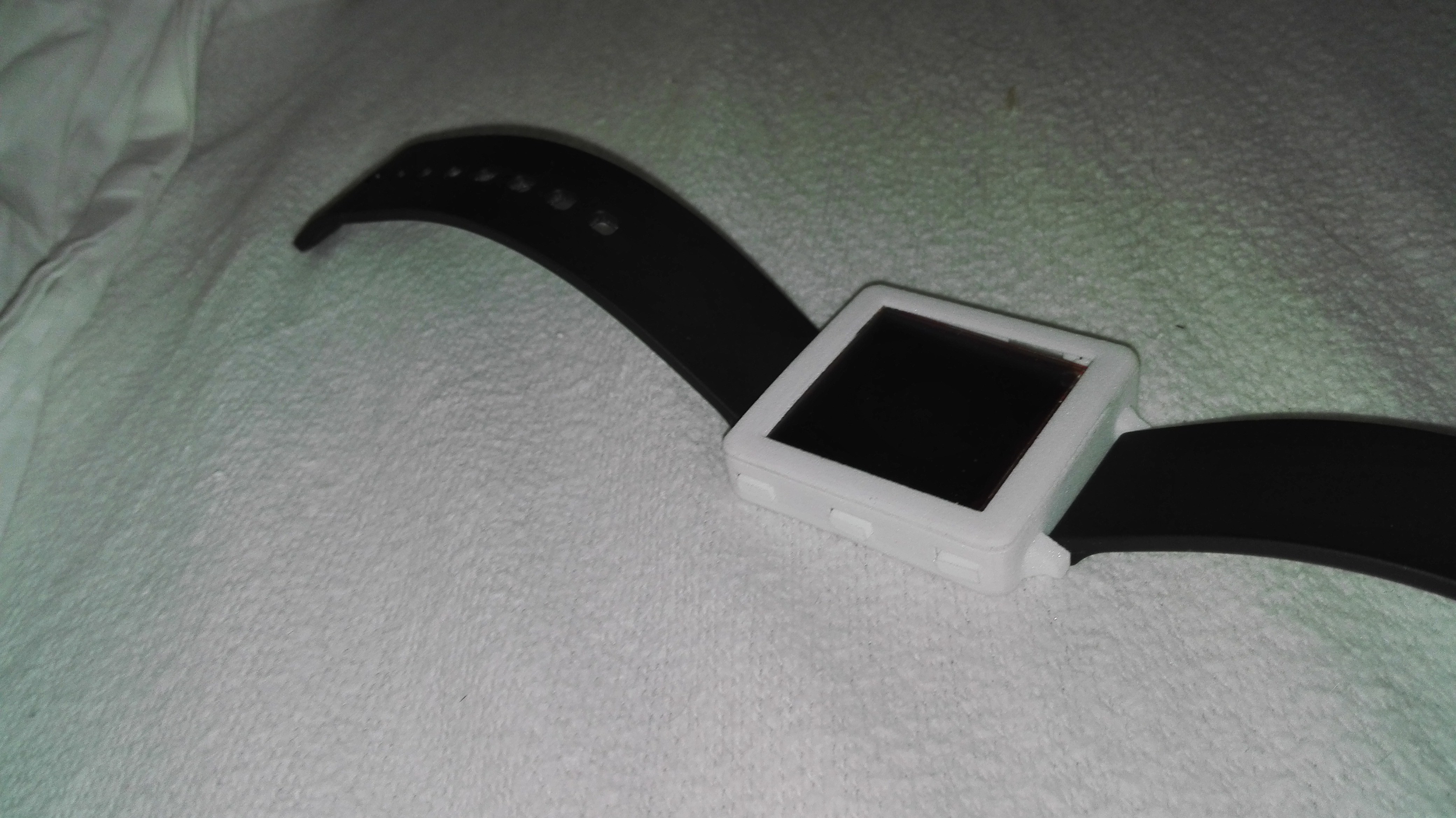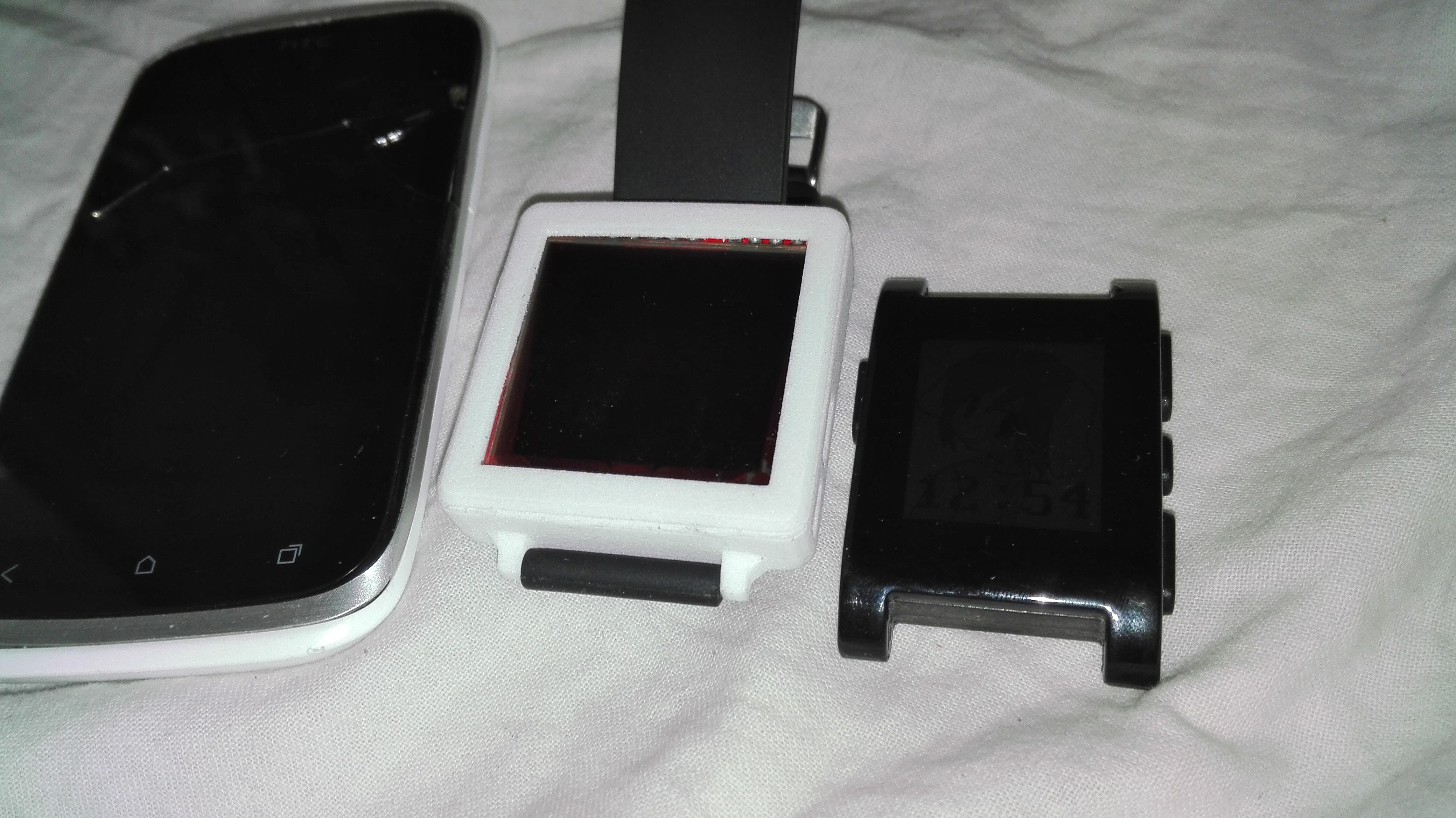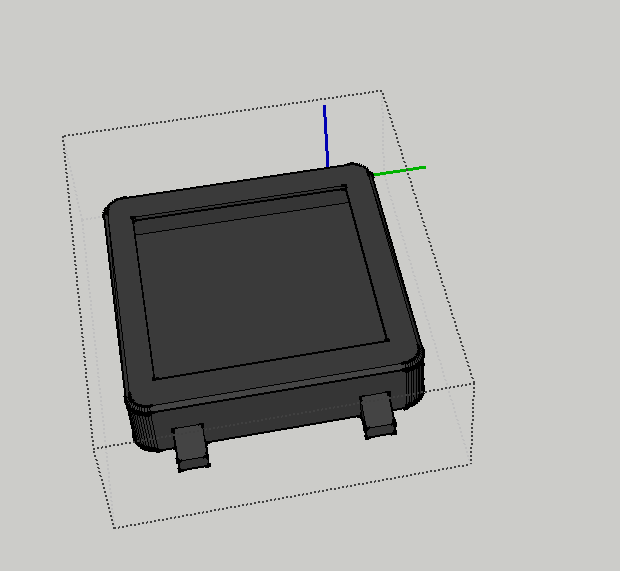Concept video
The zerowatch started off as a branch from the Pix-OS project as an initial hardware platform, but that was based on a stm32 in the early designs.
i knew it wasn't going to be very user friendly at all (programming-wise), so i searched for an alternative mcu.
one which was able to run as arduino compatible, in a small form factor, but with enough capabilities.
the only option at that time was the arduino due, but that mcu had way too much external components, and it was rather large chip as well.
that left us at the recently introduced arduino Zero, which is perfect for the job, even though it has 'only' 32kb of RAM (still 16x an Arduino uno's RAM)
The Zerowatch uses an atmel microcontroller, and has custom open source software written for it.
(it was initially being developed on an arduino due though)
it's hardware specs are:
- 48mhz arm cortex m0+ (arduino zero (native usb) compatible)
- 32 kilobytes RAM (of which max 20 kilobytes are reserved for apps*)
- 256 kilobytes FLASH
- 3 axis accelerometer
- 4 tact buttons
- 1.5 inch high color oled screen
- microsd slot
- 3 axis accelerometer
* = configurable by setting a define in the software
currently the work that is done:
- set a development plaform with the arduino zero
- write initial code
- pcb design (by Atomsoft)
- 3D print an enclosure for the Zerowatch
currently the work that is to be done:
- receive test batteries
- receive custom pcb's (made by Atomsoft) for the project.
- bugfixes and a few more demo apps.
- microsd support
subject to change ;)
 8bit-bunny
8bit-bunny







If you someone to continue this watch, which I think it deserves, please contact me.